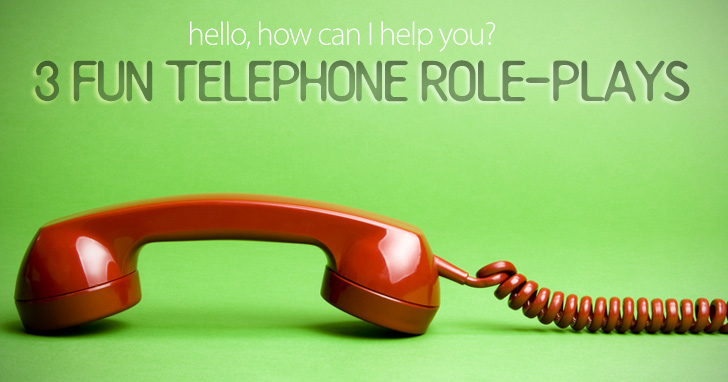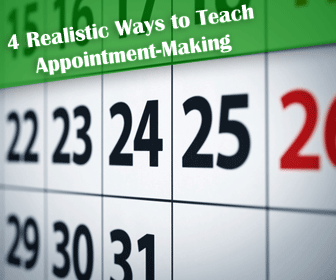Hello, How Can I Help You? 3 Fun Telephone Role-plays


Teaching appointment-making in a hands-on way can provide students with a way to re-examine how they view and use time. Follow these tips to involve your students in time managing their lives by learning how to set appointments.
The first thing you’ll want to do when teaching appointment-making to any level is to review time and the calendar. Remind students how we speak about dates and times and allow them a little practice time. You can also provide them with some structures how to ask and answer questions about availability. For example, have students do a few rounds of various types of questions and answers.
Some examples could be:
- Are you available on June 10th from 10-12? Yes I am or No I am not.
- Are you free on the 15th for lunch? Yes I am or No I am not.
- Do you have free time next Wednesday, the 23rd? Yes, I do or No, I don’t.
You can do this for as long as they need to or get into a more detailed review of dates and times if they are struggling. The review should be like a warm-up for the rest of the lesson, but if they don’t remember details or are having trouble, continue the review process.
After they are refreshed with the details of dates, numbers and times, you can then get into negotiation. Negotiation is all about finding a date, a time and a place that is mutually agreeable to all parties involved. You can start out by discussing how it works with two friends, and provide some language for negotiating. For example:
Negative responses for negotiation
Positive responses for negotiation
As you see we use a lot of expressions and phrases to discuss meeting time and place. Make a list of the ones you think would be most useful for your students and then take time to define and practice them. A great way to practice this is to actually have the students do some calendaring of their own. Give the students a calendar for the month. Have them write in five to ten appointments that they have for that month. They can be real or imagined commitments. Then provide them with or brainstorm a list of activities. Each student then must find a friend to do each activity with and arrange a time and a date. This would be done best as a mingling exercise so that they got a lot of practice asking and answering a variety of questions. It gives them a real world experience of comparing calendars and negotiating what is best for both people involved.
Once the students have practiced some informal appointment setting, they will be ready for larger tasks. It is time to introduce the more intimidating prospect of making appointments over the phone, and learning the various appointment types. Brainstorm types of appointments with your students. These may vary depending on where you teach. Some examples that you will definitely want to touch on are:
When working with people to organize appointments, especially over the phone, you want to make sure that you stress some things with the students. First, they need to ask for clarification if they are not sure what the question was or what the agreed time/date was. Second, students always need to repeat and confirm the information to make sure they got it right. And third, it is very important for them to be able to think on their feet in this situation. When you call the doctor’s office to make an appointment, often times they are busy and don’t have a lot of time to spend on the phone. Also, the students may have to suggest several dates or times before they reach success.
One of the best ways to practice the more formalized appointment-making is to do role plays, either scripted or unscripted. Put the students into small groups and give them several scenarios. Provide some examples on a worksheet or on the board as prompts and have them role play phone and in-person appointment setting. Before you do this activity, you will want to also go over what the receptionist is going to say and the ways they might phrase questions or responses. For example:
Do as many different types of role plays that you think the students would benefit from and be sure to not only monitor them, but also to debrief at the end and answer questions.
An entertaining way to wrap up or continue reviewing appointment-making is to have your students choose an event that they would like to do as a group. They will then have to plan it. Whether or not they actually do it is up to the group. It could be a birthday party, BBQ, outing to the movies, etc. You can split them into groups to make it more manageable or allow them to do it as a whole class. In either case you will need to appoint someone as the group leader, someone who takes all the notes and then someone who will notify the class of the decided date, time, and location of the outing. Students need to find a date that works for everyone by calling each other or talking in person and finding dates and times that would work for all. You can set this up in any number of ways, but essentially what you want is a lot of back and forth and negotiation. You could utilize the calendars they used earlier so that you are sure that there will be conflicts on everyone’s schedule. Get creative with this and adapt it to your needs!
The more they can see the real-world connections to their language learning, the more motivated they will be to practice and take risks.